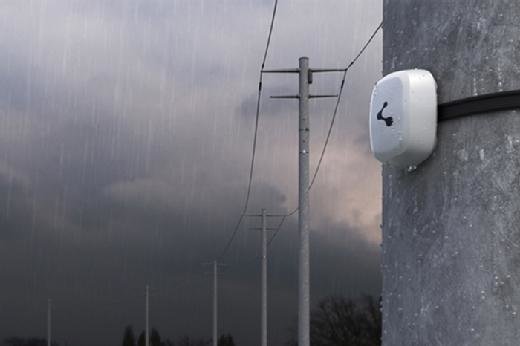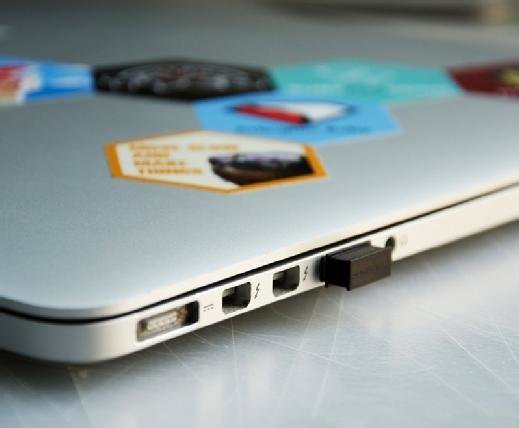
Benjamin Haas - Fotolia
An inside look at beacon technology, manufacturers and use cases
Beacons have been making headlines for a couple of years now, yet their true potential has not been reaped. Is it finally the beacon's time to shine?
If beacon technology is so great, why are we still waiting for it to give electronic shape to our physical horizons?
In 2013, the advent of iBeacon was supposed to knock the socks off the retail world. Fast forward to today and the technology is still making sock-knocking headlines. ABI Research recently predicted that not only will the total number of Bluetooth Low Energy shipments "comfortably" exceed 400 million units in 2020 but also that dedicated BLE advertising networks will be worth more than $2 billion by the same year. Shouldn't we be barefoot by now?
What are beacons?
With the release of the company's own beacon technology, Google developers said, "Just like lighthouses have helped sailors navigate the world for thousands of years, electronic beacons can be used to provide precise location and contextual cues within apps to help you navigate the world."
The beacon itself is a small location-based technology device that transmits a signal using Bluetooth Low Energy (also known as Bluetooth Smart). They are generally low-cost, battery-powered and used to transmit location-based services to nearby devices. Beacons can be so precise as to target a user standing in front of a particular product at a store, viewing a particular painting at a museum or sitting in a certain seat at an arena.
Beacons in their simplest sense are unaware of themselves or any devices around them; they merely transmit a signal that can be picked up by nearby smart devices. Once a device receives a signal from a beacon, it will connect to the internet and reference the beacon's ID, at which point appropriate data is then sent to the target device. While many beacons need a mobile app installed for the transmission to be successful, some beacon protocols do not require specially crafted apps.
Traditional beacons are not necessarily Wi-Fi connected, but many manufacturers today offer beacons that now contain memory, additional sensors such as temperature and motion, and cloud-connecting capabilities. Most beacons used today use Nordic Semiconductor or Texas Instruments chipsets.
Beacon signal range can vary from two to 80 meters, dependent on obstructions, settings and battery power.
Beacon challenges -- and solutions
Many beacon network deployments may not have made it beyond the planning room due to the fact that they are often perceived to be quite challenging. While there are a few issues surrounding beacons, vendors and service providers are actively working to fix these problems.
Whatever their benefits, beacons can have issues around calibration, the number needed to provide service throughout a given area and a natural reluctance to put ugly warts all over one's walls.
Calibration is critical. And due to signal strength and placement restraints, many beacons may be required in a particular location to achieve the desired results. Also, if beacons are too far away, they will not reach their intended recipient, but if too many beacons are in a tight area, beacon signals can potentially overlap.
Because beacons generally attach to the wall, they are sometimes considered not aesthetically pleasing. However, newer, more discreet beacon options are available that can be built into sockets and other systems. Also, due to their physical location, beacons can potentially be stolen; again, building them into sockets or even light bulbs can prevent this.
As beacons are placed in physical locations and do not have a physical identifier on the device, it can be easy to mix them up. However, beacons can be reprogrammed if necessary, and it is always possible to write an ID on the beacon itself and inventory them.
The majority of beacons run on battery power, though there are now options that use USB ports or that plug in. The battery factor means testing and replacing; once again human error may lead to location mix-ups. Many beacon services, however, offer software tools to help with the management and monitoring of a beacon network.
Mapping the proper content from a beacon to a desired device also requires proper management to ensure the right data reaches the right recipient.
Beacon security is generally not a major issue, but they can be subject to hijacking, cracking and other risks. Many beacon vendors offer security protections.
Top beacon protocols
The most popular Beacon implementations are Apple's iBeacon and Google's Eddystone.
Apple spelled out its framework for location-based technologies with iBeacon, first introduced in 2013 with iOS 7. Apple has kept the protocol proprietary, requiring non-disclosure agreements with third-party implementations such as those built for the Android platform.
Google's Eddystone, in contrast, offers open source beaconing with cross-platform support. Eddystone, arriving only in July 2015, supports multiple approaches to the basic beacon interaction. Eddystone-URL broadcasts URLs; Eddystone-UID broadcast's the beacon's ID; and Eddystone-TLM provides beacon telemetry.
Google Maps has already launched beacon-based transit notifications in Portland, Ore.; the Google Maps app can now send transit schedules and alerts to transit riders. Google also plans to soon add beacons to Google Now.
Beacon manufacturers
Three of the top beacon hardware manufacturers are Estimote, Kontakt.io and Radius Networks.
Estimote's offering -- compatible with iBeacon and Eddystone -- boasts a default battery life of about three years, a range of up to 70 meters, and an ARM Cortex-M0 core processor. The company's beacons offer motion and temperature sensors, as well as UUID rotation mode to improve security.
Estimote Sticker Beacons -- tiny beacons that the company dubs "nearables" -- were released in 2014. The devices, at 3 millimeters thick, can turn items into smart objects detectable by smartphones. For example, Estimote says its nearables and associated mobile apps can tell you when your house plant was last watered, help you figure out your bike routes and mileage, and even adjust your alarm clock depending on nearby traffic. Estimote offers packs of three beacons or 10 nearables for $99.

Started in 2013, the Polish startup Kontakt.io offers two standard location-based technologies: the Smart Beacon and Tough Beacon. Both are compatible with iBeacon and Eddystone. Smart Beacons are built on a Nordic Semiconductor chip, contain an ARM Cortext-M0 core, have batteries that last up to two years under default settings, and can scan for Bluetooth Low Energy packets more than 50 meters away. The Tough Beacon ruggedizes the hardware, combining the capabilities as the Smart Beacon for the elements; it is shatter-resistant, waterproof, and works in extreme temperatures, from -4 to 140 degrees Fahrenheit. Beacons are sold in groups of three for $84 to $99.
The Kontakt.io Cloud Beacon, introduced in late 2014 and first shipped in early 2015, offers Wi-Fi connectivity, opening its capabilities to not only transmit data to devices, but also collect data from those devices and send it to the cloud for analysis. The Wi-Fi range on the beacon technology is up to 200 meters.

Radius Networks, founded in 2011, offers a variety of proximity beacons, including RadBeacon Dot, RadBeacon USB and RadBeacon X4. Its smallest beacon, RadBeacon Dot, offers an adjustable range of five to 50 meters, battery life of 30 to 285 days depending on usage, and works on a replaceable coin cell battery. Its USB beacon offers a range of five to 30 meters and is powered by any USB charger. The X4 beacon is Radius Networks' all-weather Bluetooth Low Energy beacon that offers five to 50 meters range with up to 184 months battery life, in -40 to 140 degrees Fahrenheit. Radius Networks beacons range from $10 to $51.
Radius Networks beacons work with iBeacon and Eddystone as well as AltBeacon -- the company's own answer to an open and interoperable proximity beacon specification.

Other beacon manufacturers include Blesh, Bluvision, BKON, Gimbal, and Sensorberg.
How is beacon technology used in the real world?
Though their use cases extend far beyond it, beacons are most often associated with retail environments. In the most common example, beacon technology can help detect when a customer is in a certain part of a store or even in front of a particular product, and then augment the customer's in-store experience by sending a coupon to the customer's device, asking if they need assistance or, later when the customer logs into the retail mobile app at home, showing them the items they were looking at in the store that day.
As it evolves, beacon technology is being used not only in retail and other customer service applications, but also at airports, zoos, museums and even at home or in the office.
In consumer-facing environments, NHL hockey rinks and MLB ballparks across North America have implemented location-based marketing with a beacon network to improve fan experience. Restaurants, such as Pizza Huts in China, are using beacons to offer diners coupons and other special offers. Museums and zoos are using beacons to provide a personalized experience to viewers depending on the exhibit they are visiting.
Beacons are also being used in banks, such as Britain's Barclays and Australia's St. George Bank, to deliver customized notifications to customers when they enter a branch. South Africa's Nedbank is using beacons to implement mobile payments for its customers in retail stores.
Other environments are also benefitting from beacon technology. In the transportation sector, many airlines and railway systems are already knee-deep in the technology, using mobile apps to help travelers navigate airports and stations, receive notifications about their flights and trains, and find nearby amenities. A pilot beacon network project at the MBTA rail stations in Boston aims to improve commuter experience and enhance engagement and communication between the organization and its riders.
In the classroom, beacon networks are helping students feel safe on campus, download course materials and even check the occupancy of the library to ensure quality study time.
At home, beacon technology can help you stick to your diet, make sure you remember to take your pills and turn the lights and some music on as soon as you unlock the door. The indoor positioning systems are moving outside, revolutionizing navigation for the visually impaired and even helping you track your children at the beach.
In the healthcare sector, beacon networks have been used to manage inventory, such as wheelchairs, medical equipment, vehicles and personnel. Beacon location-based technologies have also been used to track construction site progress and safety, as well as help emergency response personnel find those in need of help rather than relying on a GPS-based coordinate given by a mobile device. Beacons can also be used not only to monitor energy use at home and in the workplace but also to unlock cars and take the guesswork out of commuting and traffic. In industrial settings, beacons aid with asset tracking, inventory management and cargo assurance.
In the enterprise, beacon networks can help employees schedule conference rooms; if a beacon is in a particular room, an app could notify users who is in that room, if it is empty, and whether meetings end early or run late. Beacons can also provide hands-free check-ins and payments, as well as access control and security clearance to buildings. Beacons have also been used to track employee attendance and help employees navigate office buildings.








